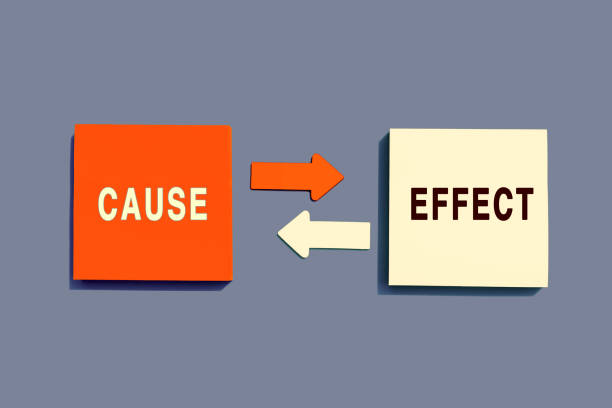Explore nuanced aspects of Quasi-Experimental Design, offering in-depth understanding and practical insights

Introduction to Quasi-Experimental Design
The world of research is vast, encompassing numerous methods and designs. One of the pivotal designs, often dubbed the middle ground between experimental and observational studies, is the Quasi-Experimental Design. Originating from a necessity to address real-world scenarios where randomized control isn’t always feasible, this design has carved a niche for itself in contemporary research.
Understanding Quasi-Experimental Design
Quasi-experimental design, at its core, is a research method where the researcher doesn’t randomly assign participants to treatment or control groups. It’s a step away from the rigidity of true experimental designs but offers more structure than observational studies.
Contrary to true experimental designs, where variables are controlled meticulously, quasi-experimental designs often deal with pre-existing groups. This gives it a unique flavor, enabling researchers to study effects in a more natural setting.
Types of Quasi-Experimental Designs
Venturing into the world of quasi-experimental designs introduces you to various sub-types:
- Time-Series Design: A classic method where the same group is observed multiple times before and after a treatment.
- Nonequivalent Control Group Design: Involves two distinct groups – one receiving the treatment and another not, but without random assignment.
- Interrupted Time-Series Design: Observations made at multiple time points with an “interruption” or treatment in between.
Advantages of Quasi-Experimental Design
Like a breath of fresh air, quasi-experimental design brings along several advantages:
- Practicality and Real-world Application: It’s grounded in reality, making it applicable in real-world scenarios where random assignment is impossible.
- Ability to Handle Ethical Concerns: In situations where it’s unethical to withhold treatment, this design shines.
- Enhanced Ecological Validity: The results often reflect real-world conditions, making them more generalizable.
Challenges and Criticisms
However, it’s not all sunshine and roses. The quasi-experimental design faces its share of criticism:
- Potential for Confounding Variables: Without random assignment, there’s always the risk of unseen factors affecting the outcome.
- Limited Internal Validity: It’s hard to establish cause and effect conclusively.
- Dependence on External Factors: The design can be influenced by external events, skewing results.
Implementing Quasi-Experimental Design
Implementing this design requires a meticulous approach:
- Key Steps in Execution: From identifying the research question to collecting and analyzing data, each step must be executed with precision.
- Ensuring Reliability and Validity: Rigorous checks and balances are essential to ensure results are consistent and reflect the true nature of the phenomenon studied.
- Practical Tips for Researchers: Always be aware of potential confounders and be ready to adapt as real-world scenarios evolve.
Applications in Various Fields
The versatility of quasi-experimental design is evident in its wide-ranging applications:
- Health and Medicine: From studying the effects of a new drug to understanding behavioral changes, it’s a staple in medical research.
- Social Sciences: Understanding societal changes, behaviors, and patterns often leans on this design.
- Business and Economics: Whether it’s market research or understanding consumer behavior, quasi-experimental designs have found their footing.
Quasi-Experimental Design in Digital Age
The dawn of the digital era has reshaped quasi-experimental design:
- Role of Technology and Software: Modern tools assist in data collection, analysis, and interpretation, streamlining the research process.
- Data Collection and Analysis Methods: Digital platforms offer a treasure trove of data, making research richer and more comprehensive.
Comparing with Other Research Methods
When juxtaposed with other methods:
- Qualitative vs. Quantitative: Quasi-experimental design can be tailored for both, offering flexibility.
- Experimental vs. Non-experimental: It beautifully bridges the gap, providing a balanced approach.
FAQs
- What sets quasi-experimental design apart from true experimental design?
True experimental design involves random assignment, while quasi-experimental does not.
- Is quasi-experimental design qualitative or quantitative?
It can be both. The nature of the research question dictates the approach.
- Are results from quasi-experimental designs reliable?
Yes, provided the study is designed and executed meticulously.
- Why choose quasi-experimental design over observational studies?
It offers a structured approach, allowing for better control over variables.
- Can technology skew results in quasi-experimental designs?
If not accounted for, technology can introduce confounding variables.
- What’s the future of quasi-experimental design in research?
With evolving tools and methods, it’s poised to become more refined and precise.
Conclusion: The Future of Quasi-Experimental Design
The realm of quasi-experimental design, with its adaptability and relevance, promises a bright future. As tools evolve and research methodologies become more sophisticated, the quasi-experimental design will continue to play a pivotal role, bridging the gap between strict experimental methods and free-form observational studies.
External Links/ Sources:
The Use and Interpretation of Quasi-Experimental Studies in Medical Informatics
